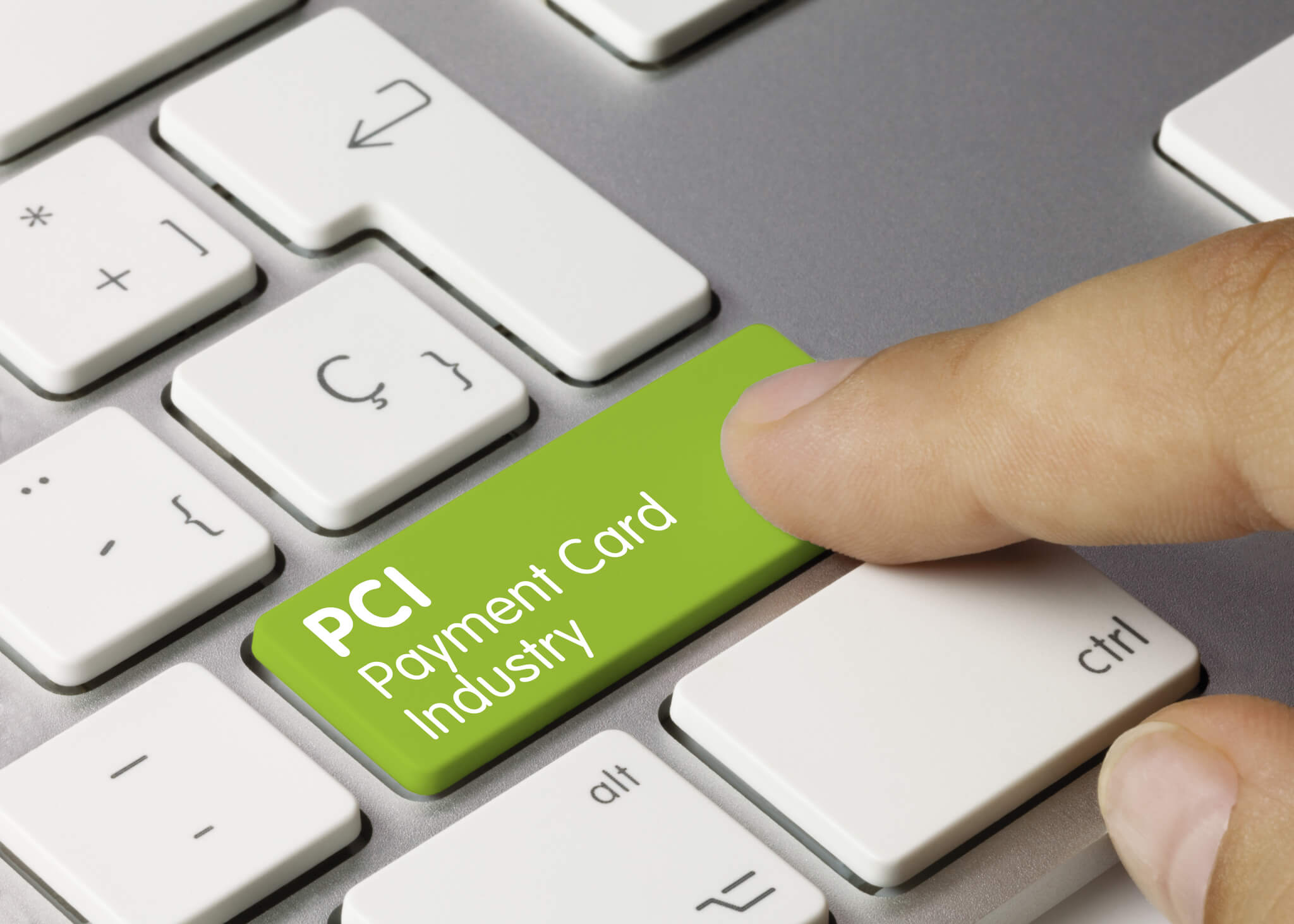
By American March 27, 2024
PCI compliance, short for Payment Card Industry Data Security Standard compliance, is a set of security standards that businesses must adhere to in order to protect cardholder data and prevent data breaches. In this comprehensive guide, we will delve into the world of PCI compliance, exploring its importance for merchants, the consequences of non-compliance, the benefits it offers, the different levels of compliance, steps to achieve and maintain compliance, common misconceptions, best practices for securing cardholder data, the role of service providers, and more. By the end of this guide, merchants will have a clear understanding of PCI compliance and how to ensure their business adheres to these standards.
What is PCI Compliance and Why is it Important for Merchants?
To understand the importance of PCI compliance, it is crucial to first grasp what it entails. PCI compliance is a set of security standards developed by the Payment Card Industry Security Standards Council (PCI SSC) to ensure the protection of cardholder data during payment card transactions. These standards apply to any business that accepts, processes, stores, or transmits cardholder data.
The primary goal of PCI compliance is to prevent data breaches and protect sensitive customer information, such as credit card numbers, from falling into the wrong hands. By adhering to these standards, merchants can establish a secure environment for their customers, build trust, and safeguard their reputation.
The Consequences of Non-Compliance: Risks and Penalties
Non-compliance with PCI standards can have severe consequences for merchants. The risks associated with non-compliance include data breaches, financial losses, legal liabilities, damage to reputation, and loss of customer trust.
In the event of a data breach, where cardholder data is compromised, merchants may face hefty fines, legal actions, and the cost of remediation. The PCI SSC has the authority to impose fines ranging from $5,000 to $100,000 per month for non-compliance, depending on the severity of the violation. Moreover, credit card companies may also impose fines and penalties, and in some cases, terminate the merchant’s ability to accept card payments.
The Benefits of PCI Compliance: Protecting Your Business and Customers
While the consequences of non-compliance can be dire, the benefits of PCI compliance are equally significant. By adhering to PCI standards, merchants can protect their business and customers from potential data breaches, financial losses, and reputational damage.
PCI compliance helps establish a secure environment for cardholder data, reducing the risk of unauthorized access, fraud, and identity theft. This, in turn, enhances customer trust and confidence in the merchant’s ability to protect their sensitive information. By prioritizing security, merchants can differentiate themselves from competitors and attract more customers who value their privacy and security.
The Different Levels of PCI Compliance: Which One Applies to Your Business?
PCI compliance is not a one-size-fits-all approach. The PCI SSC has established different levels of compliance based on the volume of card transactions processed by a merchant annually. These levels determine the specific requirements and validation procedures that merchants must follow.
- Level 1: Merchants processing over 6 million card transactions annually fall under Level 1 compliance. They are required to undergo an annual on-site assessment by a Qualified Security Assessor (QSA) and submit a Report on Compliance (ROC).
- Level 2: Merchants processing between 1 million and 6 million card transactions annually fall under Level 2 compliance. They are required to complete an annual self-assessment questionnaire (SAQ) and undergo quarterly network scans by an Approved Scanning Vendor (ASV).
- Level 3: Merchants processing between 20,000 and 1 million e-commerce transactions annually fall under Level 3 compliance. They are required to complete an annual SAQ and undergo quarterly network scans by an ASV.
- Level 4: Merchants processing fewer than 20,000 e-commerce transactions annually or up to 1 million non-e-commerce transactions annually fall under Level 4 compliance. They are required to complete an annual SAQ and undergo quarterly network scans by an ASV.
It is important for merchants to determine which level of compliance applies to their business to ensure they meet the specific requirements and validation procedures.
Steps to Achieve and Maintain PCI Compliance: A Merchant’s Checklist
Achieving and maintaining PCI compliance requires a systematic approach and ongoing commitment. Merchants can follow the following steps to ensure compliance:
- Understand the PCI DSS requirements: Familiarize yourself with the 12 requirements of the PCI Data Security Standard (DSS) and the specific requirements applicable to your level of compliance.
- Conduct a risk assessment: Identify and assess potential vulnerabilities and risks within your payment card environment. This will help you prioritize security measures and allocate resources effectively.
- Develop a security policy: Create a comprehensive security policy that outlines your organization’s commitment to protecting cardholder data. This policy should cover areas such as access control, network security, physical security, and incident response.
- Implement security controls: Implement the necessary security controls to protect cardholder data. This may include encryption, firewalls, intrusion detection systems, and access controls.
- Train employees: Educate your employees on the importance of PCI compliance and provide training on security best practices. This will help ensure that everyone in your organization understands their role in maintaining compliance.
- Regularly monitor and test security measures: Continuously monitor and test your security measures to identify any vulnerabilities or weaknesses. This may involve conducting regular vulnerability scans, penetration testing, and log monitoring.
- Complete the required validation procedures: Depending on your level of compliance, complete the necessary validation procedures, such as self-assessment questionnaires, on-site assessments, and network scans.
- Maintain documentation: Keep detailed records of your compliance efforts, including policies, procedures, and audit logs. This documentation will be crucial in demonstrating your compliance during assessments.
- Stay up to date with changes: Keep abreast of any updates or changes to the PCI DSS requirements and adjust your security measures accordingly. The PCI SSC regularly releases new versions of the standards to address emerging threats and technologies.
- Engage with service providers: If you work with third-party service providers, ensure that they are also PCI compliant. Establish clear contractual agreements that outline their responsibilities and ensure they meet the necessary security standards.
By following these steps, merchants can establish a strong foundation for PCI compliance and maintain it over time.
Common Misconceptions about PCI Compliance: Debunking the Myths
There are several common misconceptions surrounding PCI compliance that can lead to confusion and non-compliance. Let’s debunk some of these myths:
- Myth 1: PCI compliance is only for large businesses: PCI compliance applies to businesses of all sizes that accept payment cards. The level of compliance may vary based on transaction volume, but all merchants must adhere to the PCI DSS requirements.
- Myth 2: Compliance guarantees security: While PCI compliance is an essential step towards securing cardholder data, it does not guarantee absolute security. Compliance should be seen as a baseline, and additional security measures should be implemented to address evolving threats.
- Myth 3: Compliance is a one-time effort: Achieving PCI compliance is not a one-time event. It requires ongoing efforts to maintain compliance, including regular assessments, monitoring, and updates to security measures.
- Myth 4: Outsourcing eliminates the need for compliance: Merchants cannot fully outsource their PCI compliance responsibilities. While working with compliant service providers can help offload some responsibilities, merchants are ultimately responsible for ensuring their own compliance.
- Myth 5: Compliance is too expensive: While there are costs associated with achieving and maintaining PCI compliance, the potential costs of non-compliance, such as fines, legal actions, and reputational damage, far outweigh the investment in compliance.
By debunking these myths, merchants can gain a clearer understanding of what PCI compliance entails and the importance of adhering to these standards.
Best Practices for Securing Cardholder Data: Tips for Merchants
In addition to achieving PCI compliance, merchants should implement best practices to enhance the security of cardholder data. Here are some tips to consider:
- Encrypt cardholder data: Implement strong encryption mechanisms to protect cardholder data both in transit and at rest. Encryption ensures that even if data is intercepted, it remains unreadable and unusable.
- Implement access controls: Restrict access to cardholder data to only those employees who require it for their job responsibilities. Use strong authentication mechanisms, such as two-factor authentication, to ensure that only authorized individuals can access sensitive data.
- Regularly update and patch systems: Keep your systems and software up to date with the latest security patches. Vulnerabilities in outdated software can be exploited by attackers to gain unauthorized access to cardholder data.
- Segment your network: Separate your payment card environment from other networks to minimize the risk of unauthorized access. This can be achieved through network segmentation and the use of firewalls.
- Monitor and log activity: Implement logging and monitoring mechanisms to track and detect any suspicious activity within your payment card environment. Regularly review logs to identify potential security incidents.
- Train employees on security best practices: Educate your employees on security best practices, such as the importance of strong passwords, phishing awareness, and safe browsing habits. Regularly reinforce these practices through training and awareness programs.
- Conduct regular vulnerability scans and penetration tests: Regularly scan your systems for vulnerabilities and conduct penetration tests to identify any weaknesses that could be exploited by attackers. Address any identified vulnerabilities promptly.
- Implement a strong incident response plan: Develop an incident response plan that outlines the steps to be taken in the event of a security incident or data breach. Test and update this plan regularly to ensure its effectiveness.
By implementing these best practices, merchants can go beyond compliance and establish a robust security posture to protect cardholder data.
PCI Compliance and E-commerce: Ensuring Security in Online Transactions
E-commerce has revolutionized the way businesses operate, allowing them to reach a global customer base. However, it has also introduced new security challenges, making PCI compliance even more crucial for online merchants.
When it comes to e-commerce, merchants must ensure that their online payment processes are secure and that cardholder data is protected throughout the transaction. This includes implementing secure payment gateways, using SSL/TLS encryption, and adhering to PCI DSS requirements specific to e-commerce.
Merchants should also consider additional security measures, such as tokenization, which replaces sensitive cardholder data with unique tokens, reducing the risk of data exposure in the event of a breach. Regular vulnerability scans and penetration tests should be conducted to identify any vulnerabilities in the e-commerce infrastructure.
By prioritizing security in e-commerce transactions, merchants can instill confidence in their customers and protect their sensitive information.
The Role of Service Providers in PCI Compliance: Choosing the Right Partners
Many merchants rely on third-party service providers to handle various aspects of their payment card processing. It is important to choose service providers that are PCI compliant and understand their responsibilities in maintaining compliance.
When selecting service providers, merchants should consider the following:
Verify PCI compliance: Request proof of the service provider’s PCI compliance, such as a current Attestation of Compliance (AOC) or a Service Provider Listing from the PCI SSC.
- Understand shared responsibilities: Clearly define the responsibilities of both the merchant and the service provider in maintaining PCI compliance. This should be outlined in a contractual agreement that specifies each party’s obligations.
- Conduct due diligence: Research the service provider’s reputation, security practices, and track record. Consider factors such as their experience, certifications, and customer reviews.
- Regularly assess compliance: Continuously monitor the service provider’s compliance status and request updated documentation as needed. Conduct periodic assessments to ensure they are meeting the necessary security standards.
- Establish incident response procedures: Define the procedures to be followed in the event of a security incident or data breach involving the service provider. This should include notification requirements, remediation steps, and communication protocols.
By carefully selecting and managing service providers, merchants can ensure that their partners are aligned with their security goals and contribute to maintaining PCI compliance.
FAQs:
Q1: What is the purpose of PCI compliance?
A1: The purpose of PCI compliance is to protect cardholder data during payment card transactions, preventing data breaches and ensuring the security of sensitive customer information.
Q2: How can non-compliance affect my business?
A2: Non-compliance with PCI standards can result in data breaches, financial losses, legal liabilities, damage to reputation, and loss of customer trust. Merchants may face fines, legal actions, and the cost of remediation.
Q3: What are the consequences of a data breach?
A3: The consequences of a data breach can be severe, including financial losses, legal actions, reputational damage, loss of customer trust, and potential regulatory penalties. Remediation costs can also be significant.
Q4: How can I determine which level of PCI compliance applies to my business?
A4: The level of PCI compliance depends on the volume of card transactions processed by a merchant annually. Merchants can determine their level by assessing their transaction volume and referring to the PCI SSC guidelines.
Q5: What are the steps involved in achieving and maintaining PCI compliance?
A5: The steps to achieve and maintain PCI compliance include understanding the requirements, conducting a risk assessment, developing a security policy, implementing security controls, training employees, monitoring and testing security measures, completing validation procedures, maintaining documentation, staying up to date with changes, and engaging with service providers.
Q6: Are there any exemptions or exceptions to PCI compliance?
A6: There are no exemptions or exceptions to PCI compliance. All businesses that accept payment cards must adhere to the PCI DSS requirements. However, the specific requirements and validation procedures may vary based on the level of compliance.
Q7: Can I outsource my PCI compliance responsibilities to a service provider?
A7: While merchants can work with compliant service providers to offload some responsibilities, they cannot fully outsource their PCI compliance. Merchants are ultimately responsible for ensuring their own compliance and should establish clear contractual agreements with service providers.
Q8: What are some common misconceptions about PCI compliance?
A8: Common misconceptions about PCI compliance include the belief that it is only for large businesses, that compliance guarantees security, that it is a one-time effort, that outsourcing eliminates the need for compliance, and that compliance is too expensive.
Conclusion
In conclusion, PCI compliance is an essential component of any business that handles cardholder data. It’s not just a regulatory requirement; it’s a critical practice that protects businesses and their customers from the consequences of data breaches and cyber threats. By adhering to the Payment Card Industry Data Security Standard (PCI DSS), merchants can safeguard sensitive data, build customer trust, and ensure the long-term success of their business.



